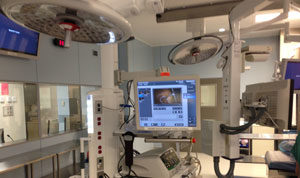How does a hospital move from a dysfunctional unit environment to one where all staff are empowered to speak when they notice something awry? How does a hospital change the culture to support patient safety?
Practices developed by high-risk / high reliability systems for industries such as aviation, nuclear power, and military operations offer key insights. Training in teamwork, communication– collectively known as Crew Resource Management (CRM) or TeamSTEPPS –, and the adoption of checklists, protocols and algorithms, have reduced accidents related to human error and poor communication in those industries. Following the invention of the jet engine, aviation became so predictably safe that a new type of human error became the dominant mode of failure: humans working – or more precisely – not working together. The foundation of safety is maintenance of a coordinated, vigilant team.
- Developing change initiative skills for key leaders
- Providing training in teamwork and communications
- Creating site-specific tools for safety and efficiency
- Collecting data to document results
- Conducting reviews to ensure sustainability
- Providing ongoing coaching and mentoring to teams, physicians, and leaders


